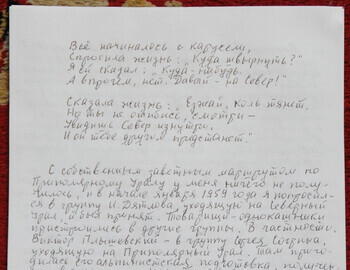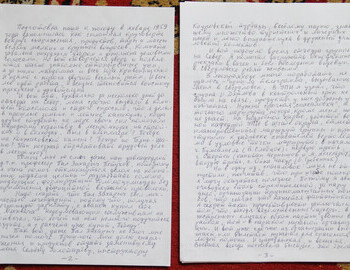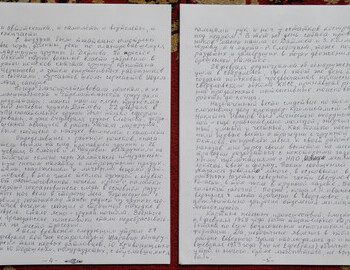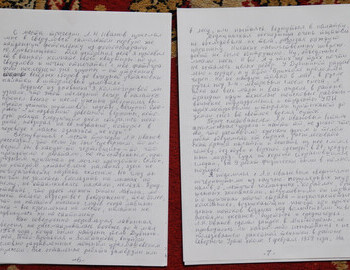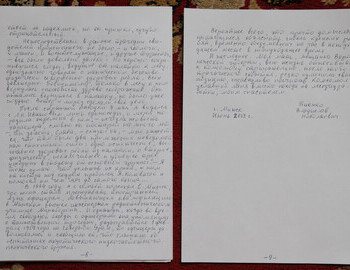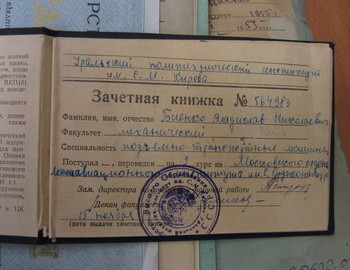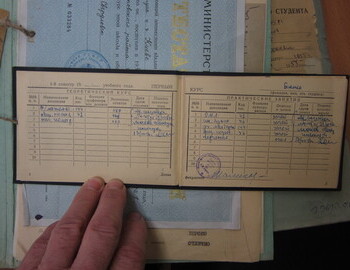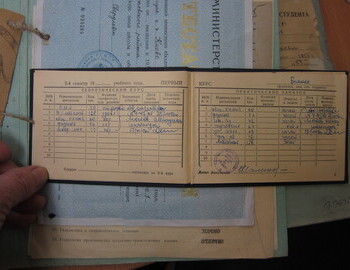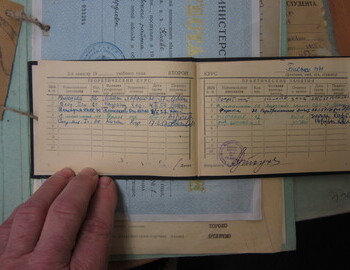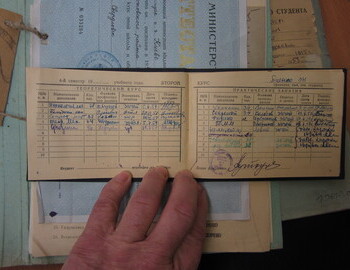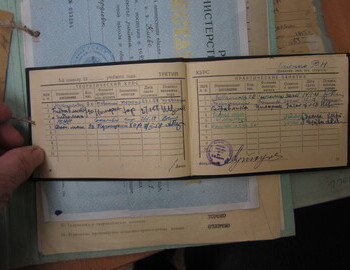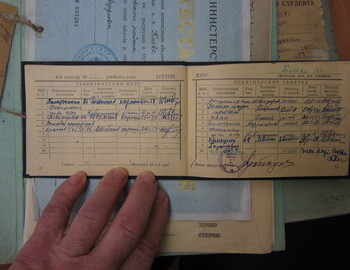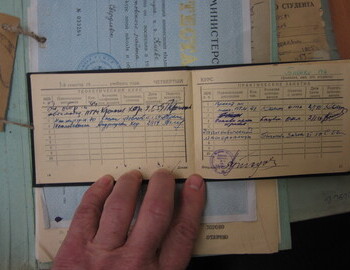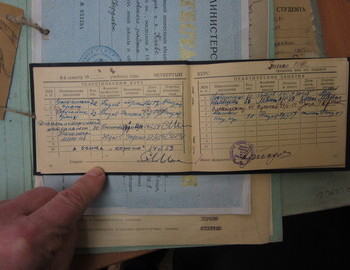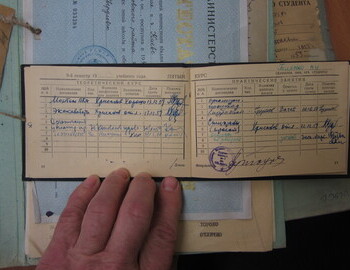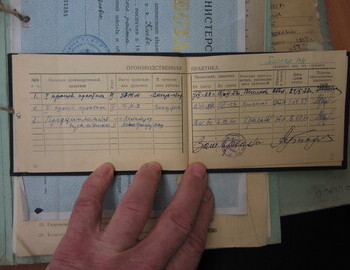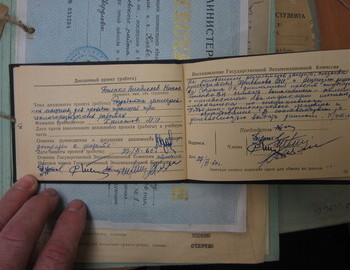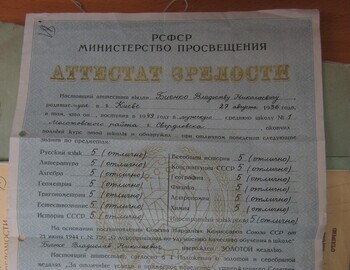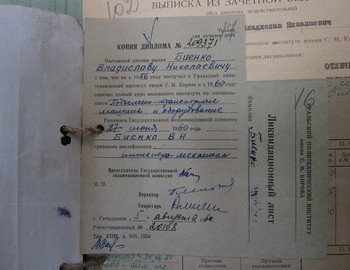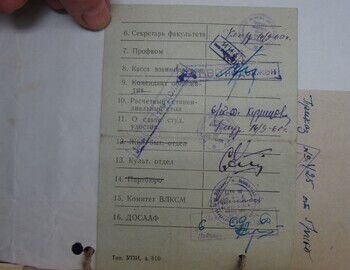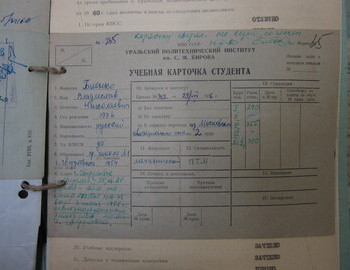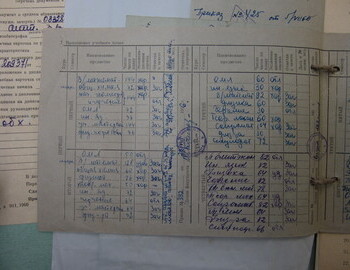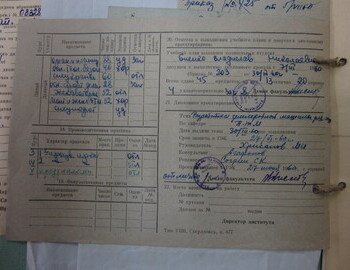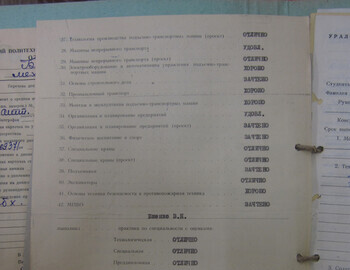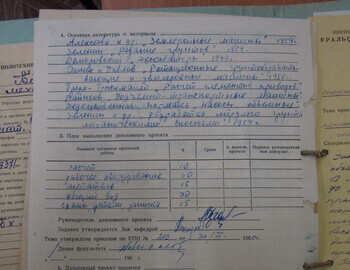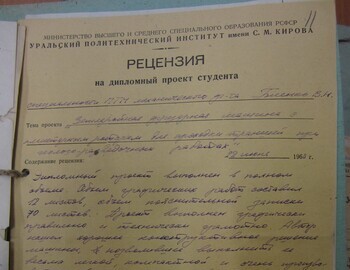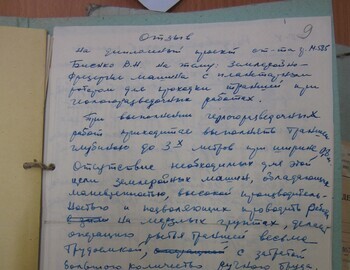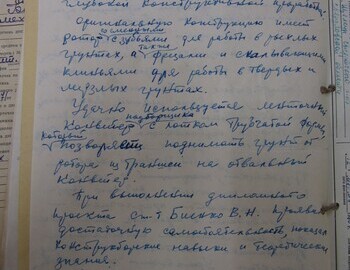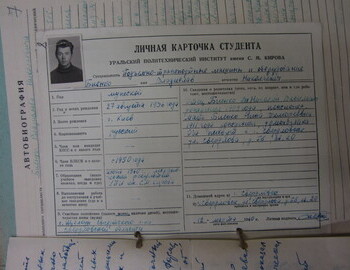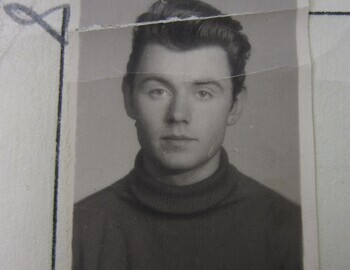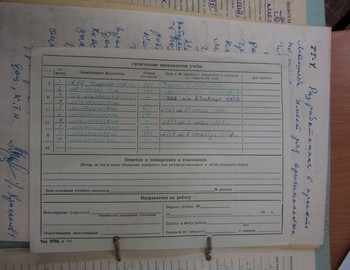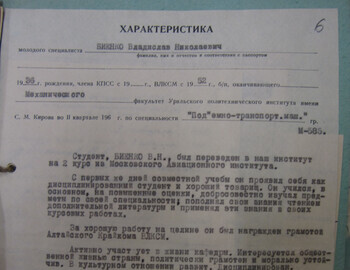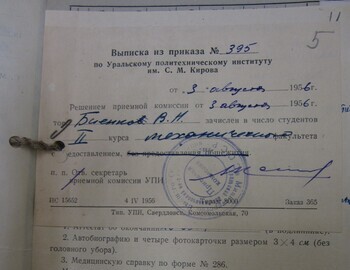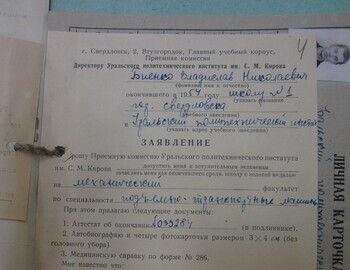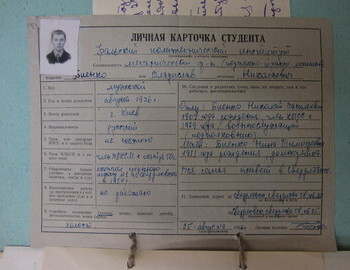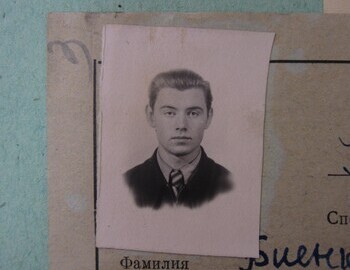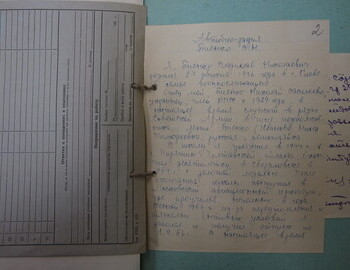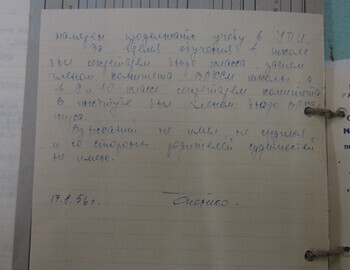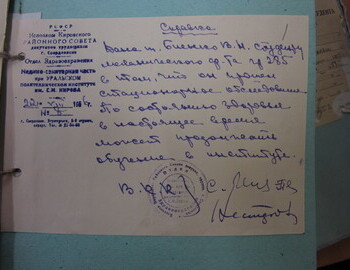
Bienko - the 11th member of the Dyatlov group
All rights belong to Komsomolskaya Pravda.
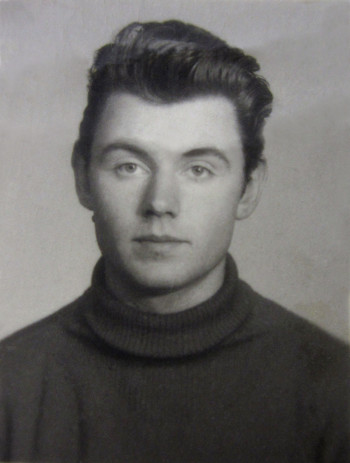
Vladislav Nikolaevich Bienko
Vladislav Bienko now lives in Minsk. At the time of this interview (June 26, 2013), he is 77 years old - the same age as Igor Dyatlov. Vladislav Nikolaevich perfectly remembers the winter of 1959 and the members of the Dyatlov group, with whom he was supposed to go ob a trip to Mount Otorten. When the last preparations were completed and there were three days before leaving, Bienko as a student was summoned to the Komsomol committee, where he was questioned what he had done during the last summer and winter holidays, when his comrades and fellow students helped the national economy on labor fronts - on state farms, timber industry enterprises and at construction sites in the country. It turned out that Vladislav had spent all his holidays on mountain hikes! Well, if so, then the Komsomol member Bienko was immediately awarded a ticket to the "Udarnik" timber industry enterprise, and no higher school administration could help him escape this fate.
- Even our head of the department, Professor Pal Zakharych Petukhov, could not help me, - recalls Vladislav Bienko, - with whom I had very good relations. I had to give my share of equipment and food to Semyon Zolotaryov, who replaced me, an instructor at the Kourovka tour base. And when the time came for the group to leave for the North, all I could do was help my comrades load heavy backpacks on the train.
– It turns out that Semyon Zolotaryov took your place in the group?
– Yes, because my place vacated.
– Maybe the Komsomol specifically sent you to the timber industry camp in order to make room for Zolotaryov?
– No I do not think so. In those days, everything was much more honest.
The Regional Party Committee was pulling all the strings
– They say that Zolotaryov was a stranger to the Dyatlov group?
– Not true. Everyone immediately fell in love with Zolotaryov. He was a sociable and cheerful guy. Easily connected with anyone. He knew a lot of hiking and camp songs. He easily fit into the Dyatlov group. He especially made friends with Nikolay Thibault. They were inseparable. So, if it were not for that Komsomol obligation, then I would have gone with the guys to Otorten... I didn't manage to work for a long time at the timber industry enterprise - I was summoned urgently to Sverdlovsk with a telegram from UPI. When I arrived, I found out that the Dyatlov group did not make the deadline, they should have already ran out of food. We need to look for them immediately, and no one knows the exact route of the expedition except me. I must say, all my life I was distinguished by punctuality and meticulousness. I knew the route by heart. So, following my tips, the rescuers set off. They didn’t take me to any of the rescue groups, considering that I could be more useful at the search headquarters. I became an eyewitness to such a rapid organization of large-scale searches that now it seems unreal. And the secret of such efficiency was that, bypassing all departmental barriers, the Regional Party Committee called the District Committees, and they called the Party Committees of the necessary organizations. Help, both civilian and military, was provided immediately. This included vehicles, planes, helicopters, and special units. At the request of the Regional Party Committee, the military first dropped off at the search area a group led by Captain Chernyshev, and then K9 units, cadets of the Ivdellag school of sergeants, and sappers. A few days later - on February 26 - students Slobtsov and Sharavin found an abandoned tent on the slope of Mount Kholat Syakhl. On the morning of February 27, the same sharp-eyed Sharavin found the first bodies - Yuri Doroshenko and Yuri Krivonischenko, half-naked near the remains of a fire under a cedar, with charred fingers and toes. On the same day, the dog of the Mansi guides found Dyatlov and Kolmogorova, and on March 4 - Slobodin, also half-naked and frozen in poses of movement towards the abandoned tent.
- 2 -
A student was entrusted with developing a film of the Dyatlov group
– It is known that you personally worked with investigator Ivanov.
– The criminal prosecutor Lev Nikitich Ivanov was young, smart and honest. As soon as the first news of the tragedy with the Dyatlov group arrived, he included me in his work. From the scene of the tragedy, Ivanov sent me by plane to Sverdlovsk the very first film found in Yuri Krivonischenko's camera. It had to be done urgently, and I developed it overnight in my apartment and printed photographs of the last day of the group - from the morning fun gatherings to the evening setting up the tent in stormy conditions. True, I was a little hasty, washed the paper poorly, and now the photographs have turned yellow.
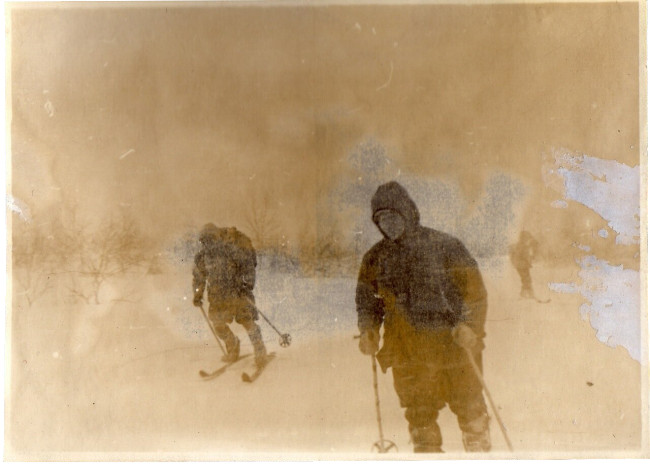
Krivonischenko film №2 frame 27 from Bienko's archive
– Amazing! Why Ivanov entrusted the development of the film to you, a student, and not to forensic specialists?
– I do not know. He probably trusted me. And secondly, perhaps he was in a hurry to see what was in the photographs? It is possible that because it was the weekend, their departmental darkroom did not work. Ivanov also entrusted me to deal with some newspaper articles about UFOs before his flight to the scene of the tragedy. Such messages appeared in other newspapers in the northern districts of the Sverdlovsk region, including the large newspaper Tagilskiy Rabochiy. Later, when Ivanov returned to Sverdlovsk, he additionally asked the police and meteorological services to explain the UFO situations that had been observed in the period close to February 1, 1959, that is, to the date of the group's death. But no one could explain anything. Ivanov even wrote to the USSR Ministry of Defense asking if there were any bright flying objects, resembling what the eyewitnesses saw, e.g., military or space rockets, or some other aircraft?
He sent a request and did not expect an answer. But the answer came quickly, literally in a couple of weeks. Ivanov was very surprised. It stated that no launches were made either in this area or to this area.
It is possible that this was so, because witnesses say that they saw bright balls above the horizon, which means that if the rocket flew by, then it flew far from the site of the tragedy. If it were in the region of the Northern Ural, then the phenomena would be visible at the zenith. Ivanov interrogated the Mansi if they have seen anything unusual. He collected all the information that he could find. He tried to find the reason of it all. He was sure to the very end that the hikers left the tent voluntarily and of sound health, except for their mind. He meant that they were physically healthy, but they were not completely there in the head. What caused the insanity was a mystery to Ivanov. Apparently, it was only in the forest that they regained the ability to reason. They tried to return to the tent, but it was too late - the wind and cold killed them.
– What did Ivanov believe happened?
– When Ivanov returned from the scene of the tragedy, he told me that if he were superstitious, he would have believed in the devil. What happened to the guys couldn't have happened due to natural causes. The slope where the tent stood cannot be called steep. Only an overactive imagination can see an avalanche descending there. Moreover, there are no signs of an avalanche on the tent - all the mountings are in place, the tent has not moved a single centimeter. The avalanche version as completely ridiculous was not considered at all until May 4, 1959, when the bodies of Dubinina, Thibault and Zolotaryov were found. These bodies inside were as if crushed by a powerful Uralmash press. The rest of the guys froze either in the forest or on the way back to the tent.
The medical examination of the first five bodies was very thorough. They didn't have any violent injuries. But these three hikers found in May have almost no ribs left unbroken. Dubinina's heart is pierced, Thibeaux-Brignolle's skull is broken. Ivanov returned from the location where the last four bodies were found a different man, I couldn't recognize him. From an energetic, agile and sociable, he turned into a depressed and indifferent person. He seemed aged with decades. When I asked him what is going on, he only said: "You know, Slava, it seems to me that there were two applications of a natural force unknown to us: one - psychical, which drove healthy guys out of the tent, and the second - physical, that injured and killed three people who left the main group."
– Maybe Ivanov learned something that was a state secret?
– I don't know.
The bark peeled off the trees
– What do you think about this tragedy?
– I think they divided into three groups, with three people in each. The first three - Dyatlov, Slobodin and Kolmogorova - went back to the tent and froze on the way. The second group - Doroshenko, Krivonischenko and Kolevatov made a fire under a cedar. The third group - Zolotaryov, Thibeaux-Brignolle and Dubinina went into the ravine to do the flooring. There, the third group was attacked by something. Kolevatov heard the cries and came to them from the cedar. Maybe he tried to help them? He froze clinging to Zolotaryov's back.
– What could have injured those three?
– In 1964, my family and I moved to Minsk, where my wife began to teach English to officers upgrading their qualifications at the Minsk Higher Radio Engineering School of the Ministry of Defense. And once during a free conversation with the officers, she mentioned this tragedy in the Northern Ural. The officers told her that they had heard about tests in this area of acoustic low-frequency psychic weapons. Maybe all this is nonsense, or maybe not. But it is interesting - also in those days other military men who guarded the convicts in the logging areas of the Northern Ural said, that allegedly after the winter of 1959 in many forest areas the bark peeled off on the trees. If this is true, why did it peel off? Maybe, in fact, under the influence of some acoustic tests?
- 3 -
V. N. Bienko recollections (June 2013)
Transcript Aleksey Parunin
It all started with a carousel
Life asked: "Where to get off?"
I told her: "Anywhere.
Wait, no. I'll go North!"
Life said: "Go, the pull is strong.
But don't make a mistake,
When you get to know the North,
It will seem to you so different".
I did not have luck with my own cherished route through the Subpolar Ural, and in early January 1959 I asked to join I. Dyatlov's group, leaving for the Northern Ural, and I was accepted. My fellow classmates joined other groups. Victor Plyshevskiy joined the group of Sergey Sogrin, leaving for the Subpolar Ural. His mountaineering training, obtained in the "Ullu-Tau" alpine camp in the Elbrus region, and experience in working on rocks, snow and ice, came in handy. Oleg Grebennik also received the "USSR Mountaineer" badge there. The doctor did not allow me to climb the summit, considering my pulse too fast after running around the clinic. For the sake of fairness, it should be said that a little later, having passed a strict medical examination, of the entire academic group, only O. Grebennik and I were allowed to fly on the Il-28 jet attack aircraft. But the destruction of domestic military aviation by N. Khrushchev was so rapid that we managed to fly only on the Li-2 in 1959 in the Far East and in 1960 in Ukraine on the Tu-4 (the American "flying fortress" B-29, which dropped the first nuclear bombs on Japan).
[2] I remember our preparation for the expedition in January 1959 as a continuous fussing over equipment, food, containers and weights small and big issues. The room was covered with supplies and filled with serious voices. Then the door opened and in the frame appeared familiar protruding ears, behind them the mandolin and finally Yuri Krivonischenko himself. Cheerful cords sounded right from the doorway. And the work became more fun, and life seemed truly beautiful and amazing.
And then, just a few days before leaving for the North, I was urgently summoned to the Komsomol Committee and sternly asked what I did during the last winter and summer holidays, when other students, as much as they could, helped the national economy in the timber industry, on construction sites and collective farms. Have you been to a mountain camp? Hiking to Konzhakovskiy Kamen? Trekking in the Tien Shan? Now you have to work off your labor debt to the timber industry enterprise!
Even our head of the department, Doctor of Technical Sciences, could not help me. Professor Tal Zakharych Petukhov, whom I helped a lot in responding with deeds to the virgin land raising company - to develop a hay pick-up that forms hay balls without the use of scarce knitting wire.
I must say that Tal Zakharych was a legendary person, for example with the advance on his salary he bought himself a "Moskwitch". Since this is not really a top of the line car to his bewildered colleagues, he replied that he wanted to learn to drive on it, and with his salary he is going to buy a "Pobeda".
So, even Tal Zakharych could not help me with anything. I had to give my share of equipment and food to Semyon Zolotaryov, who replaced me, an instructor [3] of the Kourovka basecamp, a cheerful guy who knew many hiking and camp songs and easily fit into the friendly Dyatlov group.
And now the time has come for the group to leave for the North. I helped to load their heavy backpacks into the carriage and was the last person to see the guys in Sverdlovsk alive.
I didn't work for long at the timber industry enterprise - a telegram came calling me to Sverdlovsk. At UPI I learned that the group of I. Dyatlov did not get in touch within the deadline, they should have run out of food. They needed an urgent rescue operation, and no one knows the exact route of the trip, except me. On the detailed map, obtained by the military department of the UPI at the headquarters of the district, they marked the planned route of the group and began to transfer the rescuers by helicopters to the nodal points of the route: in the beginning, the town of Pumsalnel (B. Slobtsov); the first third, Otorten (captain Chernyshev and M. Akselrod); the second third, Oyka Chakur (O. Grebennik).
They didn’t let me go to any of the rescue bases, believing that I could be more useful at the search headquarters. I became an eyewitness to a very expedient, taking couple of days, organization of large-scale search that now it seems unreal. And the secret of such efficiency was that, bypassing departmental barriers, in case of emergency, the Regional Party Committee called the District Committee, and the latter called the Party Committee of the necessary organization. The resources, both civilian and military, needed to save people is urgently provided by the organization. The military has always one step faster, [4] automobiles, planes, helicopters, and special units.
All the mountains, valleys, and rivers along the planned route of the group of I. Dyatlov were carefully examined from the air. At the request of the Regional Party Committee, the military first dropped off at the search area a group led by Captain Chernyshev, and then K9 units, cadets of the Ivdellag school of sergeants, and sappers.
The weather was favorable for the search, and their scale and swiftness immediately yielded results: the Mansi found traces of the supposed overnight stay of the Dyatlov group. On February 22, rescue groups were just formed at UPI, and on February 24, the Slobtsov group, dropped off by aviation in the area of the beginning of the route, was informed about the find with a canister from an aircraft.
Having decided on the search area, the rescuers went on the trail of the missing group and on February 26 B. Slobtsov and M. Sharavin found on the gentle slope of Mount Kholat Syakhl a tent half-covered with snow with untouched food, equipment and personal belongings of the Dyatlov group, including warm clothes and shoes. From the tent, which had been cut with a knife, well-preserved tracks mostly barefoot led towards the forest. The radio operator from a group of geologists who came with two Mansi hunters reported to Ivdel in the evening about a terrible find. It became clear that the group had died. Military and civilian search parties began to move to the scene of the tragedy.
Meanwhile, the next morning on February 27, the same sharp-eyed Sharavin discovered the first bodies of Y. Krivonischenko and Y. Doroshenko, half-naked, with charred [5] fingers and toes near the remains of a fire under a cedar. On the same day the dog of the Mansi guides found I. Dyatlov and Z. Kolmogorova, and on March 4 - R. Slobodin, also half-naked and frozen, in poses of movement towards the abandoned tent.
- 4 -
On February 28, a radiogram about the discovery went to Sverdlovsk, where on the same day an emergency search commission of the Sverdlovsk Regional Committee of the CPSU was created, which decided to continue intensive search work until they are all found.
The criminal prosecutor Lev Nikitich Ivanov, appointed to conduct the investigation in this complex case, was an extraordinary person - still relatively young, energetic, intelligent and honest. As soon as the first news of the tragedy with the Dyatlov group arrived, he included me in his work, instructing me, before his flight to the scene of the tragedy, to deal with some newspaper publications about UFOs that change brightness, color and shape. There were quite a few such reports, mainly in regional newspapers in the northern part of the Sverdlovsk region, including in the large newspaper "Tagilskiy Rabochiy" (Tagil worker). Later, when L. N. Ivanov returned from the scene of the tragedy to Sverdlovsk, he additionally requested information from the police department and the meteorological service.
The picture of celestial events close to February 1, 1959 was carefully studied using all possible sources of information. Yes, unusual phenomena in this region of the Northern Ural were observed before and after February 1, 1959 (but not February 1), usually in the morning, and did not cause anything but curiosity.
[6] From the scene of the tragedy, Ivanov sent me by plane to Sverdlovsk the very first film found in Yuri Krivonischenko's camera. To speed things up, I developed it at night in the bathroom of my apartment on Sverdlov St. and printed the photographs from from it of the last day of the group - from the morning fun gatherings to the evening setting up the tent in stormy conditions.
Later from the Kolmogorova's diary, we learned that this last evening in the tent was fun and after dinner ended with the release of a humorous newspaper "Evening Otorten" - after the name of the peak they were going to summit on the next day, despite its name, which translated from Mansi means "don't go".
When Ivanov returned from the scene of the tragedy, he told me that if he were superstitious, he would have believed in the devil. What happened to the guys couldn't have happened due to natural causes. The slope on which the tent is pitched cannot be called a slope. It is almost invisible to the eye. It is impossible to slide on skis on it without pushing off with poles. Only an overactive imagination can see an avalanche descending there. Moreover, there are no signs of an avalanche on the tent - all the mountings are in place, the tent has not moved a single centimeter.
The avalanche version as completely ridiculous was not considered at all until May 4, 1959, when the bodies of Dubinina, Thibault and Zolotaryov were found, their bodies inside literally as if crushed by a powerful Uralmash press. The rest of the guys froze either in the [7] forest or on the way back to the tent.
The medical examination of the first five bodies was very thorough, cutting up every scratch. They didn't have any violent injuries. Well, fox-eaten noses. And that's all. But these three hikers found in May have almost no ribs left unbroken. Dubinina's heart is pierced, Thibeaux-Brignolle's skull is broken. But they will be found only in May, in the stream bed under a 3-4-meter layer of snow. In the meantime, all March and all of April heavy search work was conducted in the area of the tragedy - military units and UPI students with three-meter probes pierced the snow to the ground till there was daylight.
Investigator L. N. Ivanov was faced with an extremely difficult task - to find what, I don't know what, what made the guys, strong in spirit and body, mad with fear, rip the side of the tent and flee from it headlong, without shoes and outer clothing, in 27 degrees of frost. Judging by the well-preserved traces, all 9 hikers were in perfect physical health.
I shared with L. N. Ivanov some information I've read in a popular science magazines about the "Flying Dutchmen", ships abandoned by crews mad with fear, and the reasons for this fear - low-frequency oscillations that sometimes occur when air currents pass over the undulating surfaces of oceans, deserts and midlands. L. N. Ivanov made a request to the Ministry of Defense if any tests were carried out in the Northern Ural around February 1, 1959. They didn’t hope for an answer [8], but it came, entirely negative.
There were no witnesses of the incident in the area of the tragedy - geologists, Mansi, military personnel and other hikers were all quite far away. But well-preserved footprints leading from the tent to the forest unambiguously speak of the stampede of physically perfectly healthy people. All nine. Apparently, only in the forest did they regain the ability to reason. They tried to return to the tent, but it was too late. The wind and frost caught up with them.
After the terrible discovery on May 4, I saw L. N. Ivanov only once, and I was struck by the change in him - the liveliness of his character disappeared, as if he had aged many years.
- "You know, Slava, it seems to me that there were two applications of a natural force unknown to us: one - psychical, which drove healthy guys out of the tent, and the second - physical, that injured and killed three people who left the main group." - I also think that hearing their cries, A. Kolevatov made his way to them from the fire under the cedar and helped them as best he could until the very end...
In 1964, my family and I moved to Minsk, where my wife began to teach English to officers upgrading their qualifications at the Minsk Higher Radio Engineering School of the Ministry of Defense. And once during a free conversation with the officers, she mentioned this tragedy in the Northern Ural. The officers told her that they had heard about tests in this area of acoustic low-frequency psychic weapons.
[9] Most likely, this is just speculation trying to explain the death of strong guys, temporarily distraught for an hour in the wrong place at the wrong time.
And the last thing. My mother, a petty bourgeois woman of the Voronezh province, who had a negative attitude towards the Komsomol all her life, after this tragic event, abruptly changed her position, rightly considering the Komsomol, which sent me logging instead of the expedition, as my savior.
Vladislav Nikolaevich Bienko
Minsk
June 2013
You can discuss this article in Dyatlov Pass Forum →
Bienko recollections
Bienko documents

